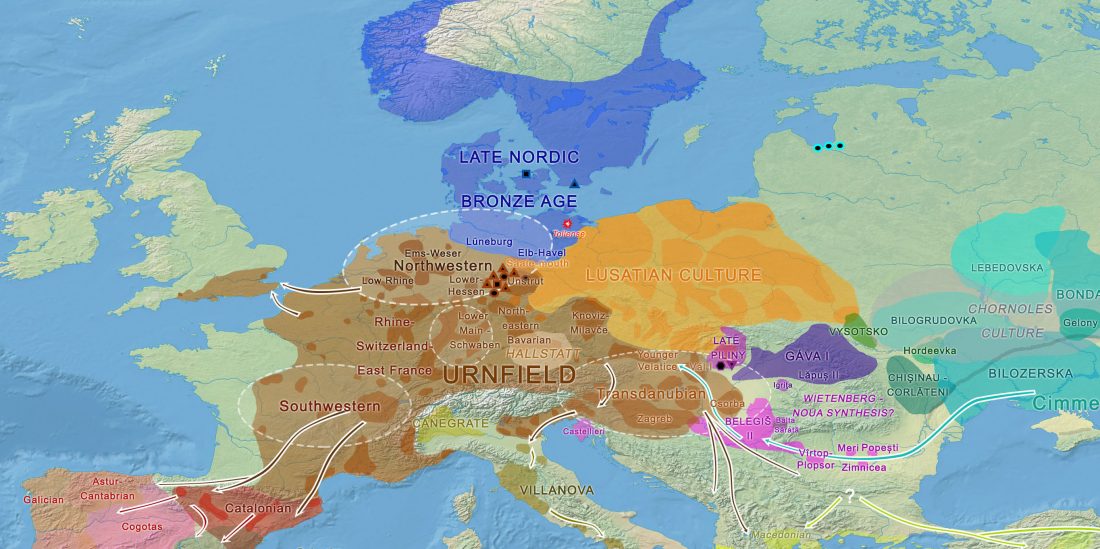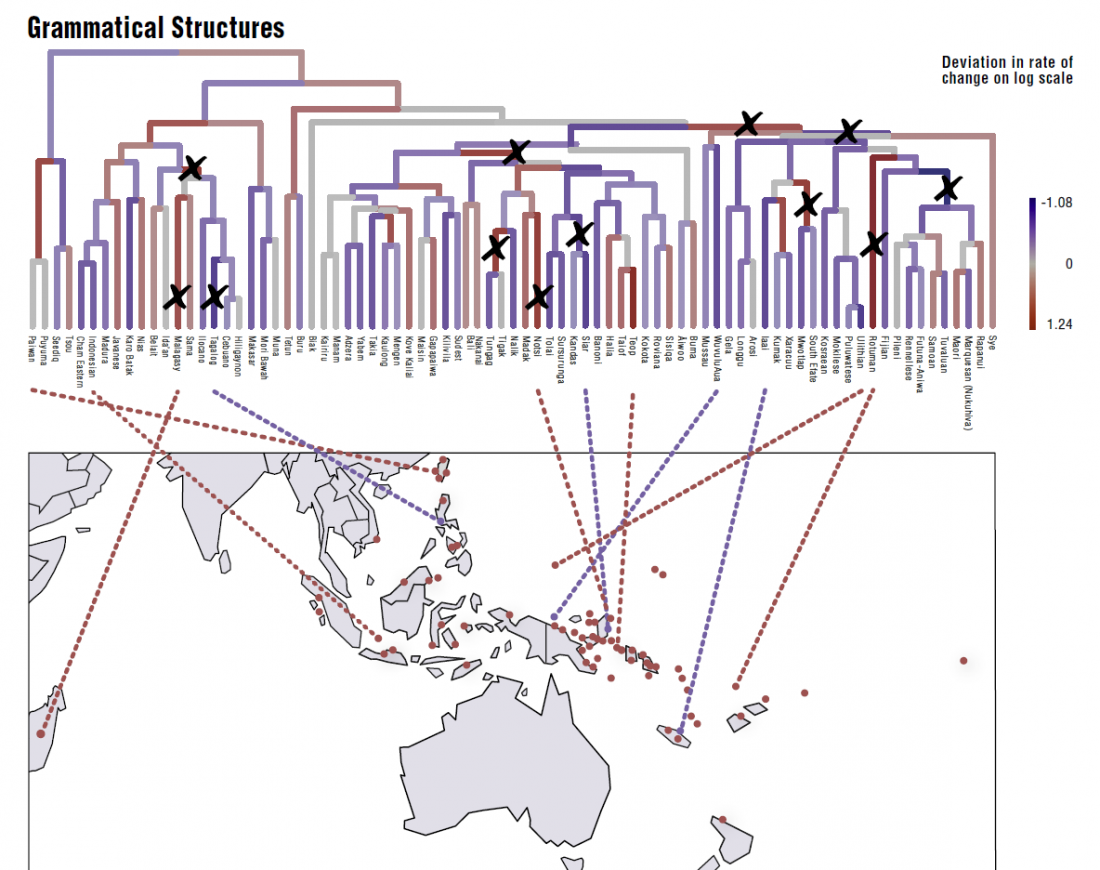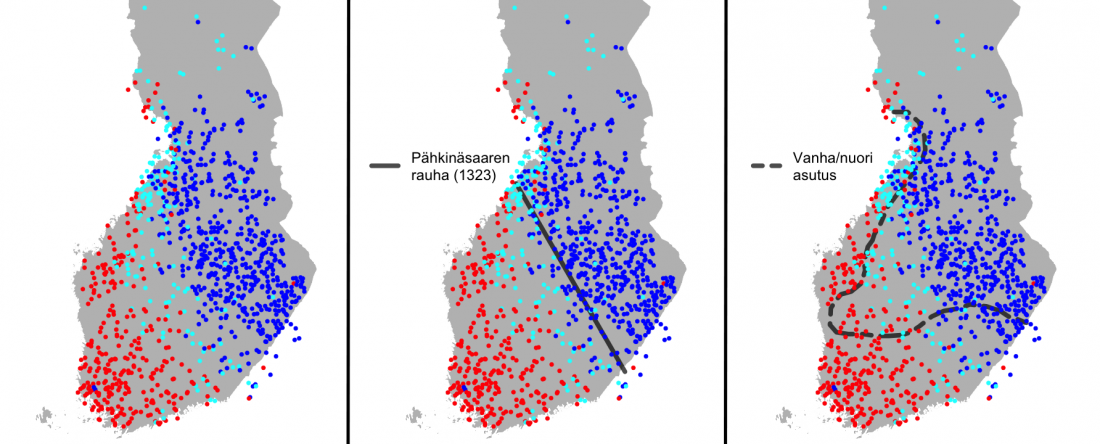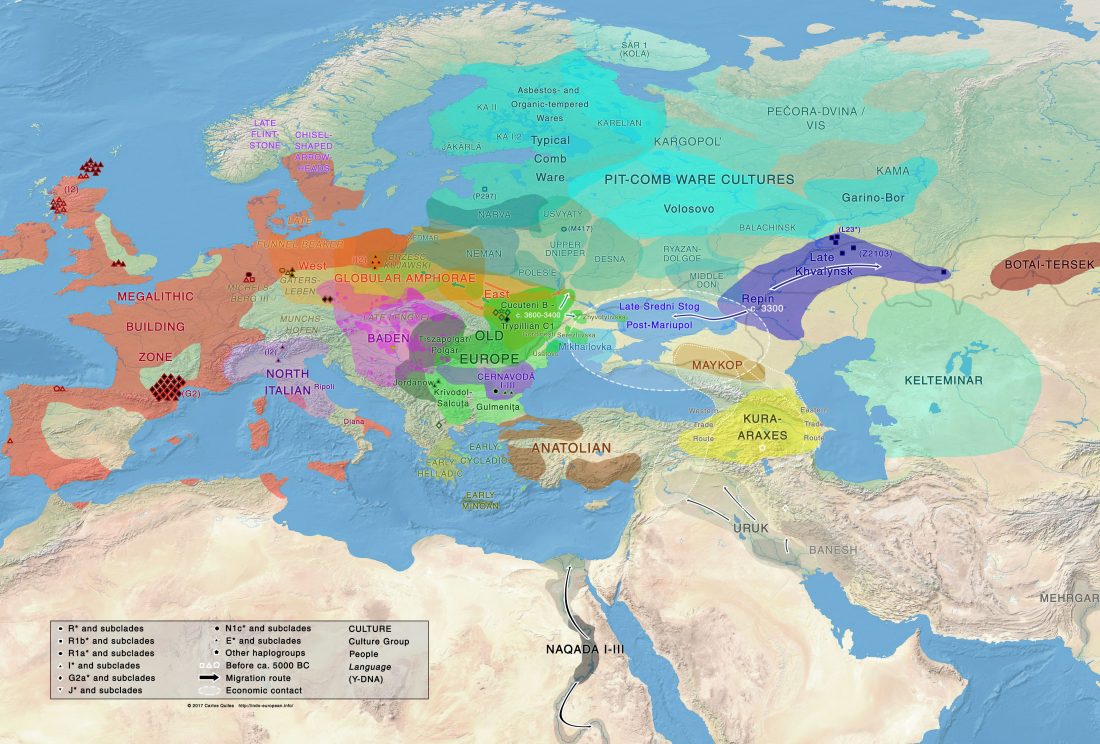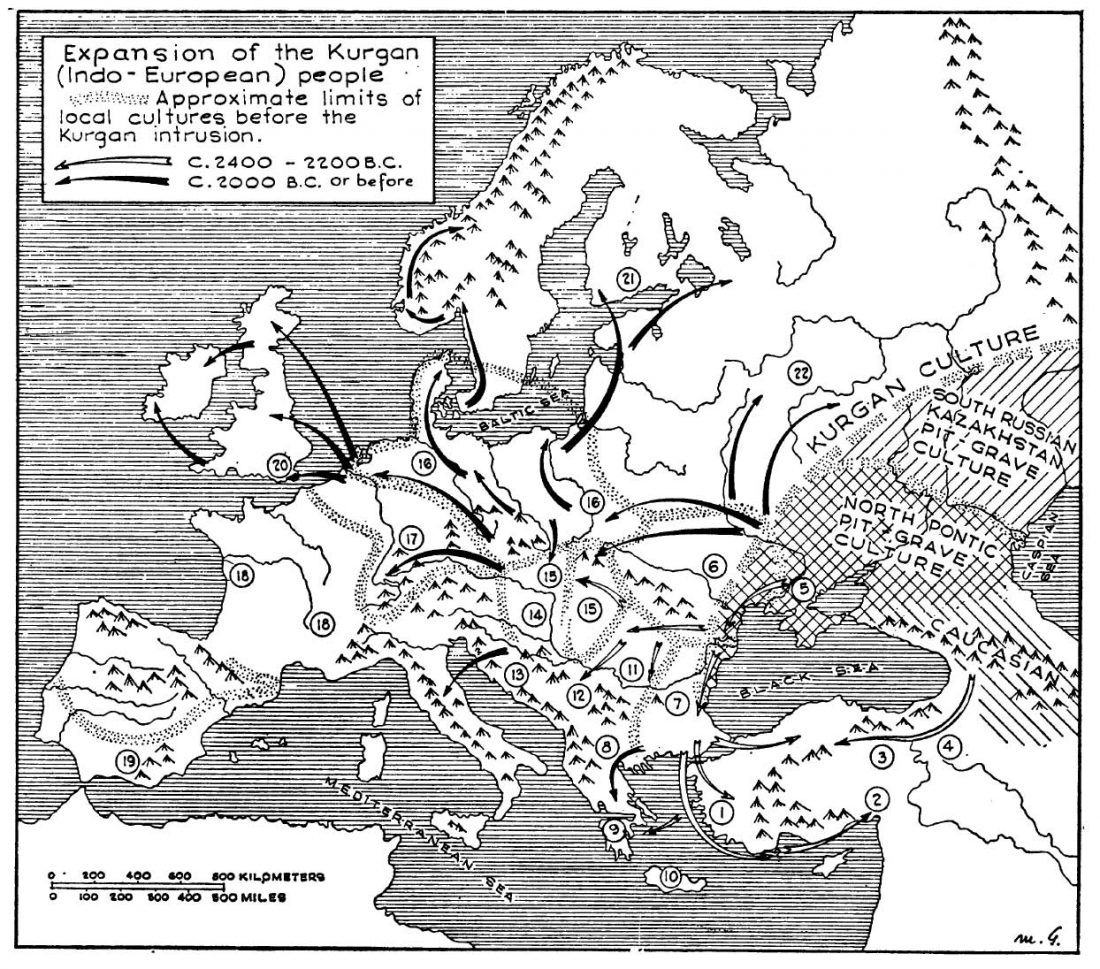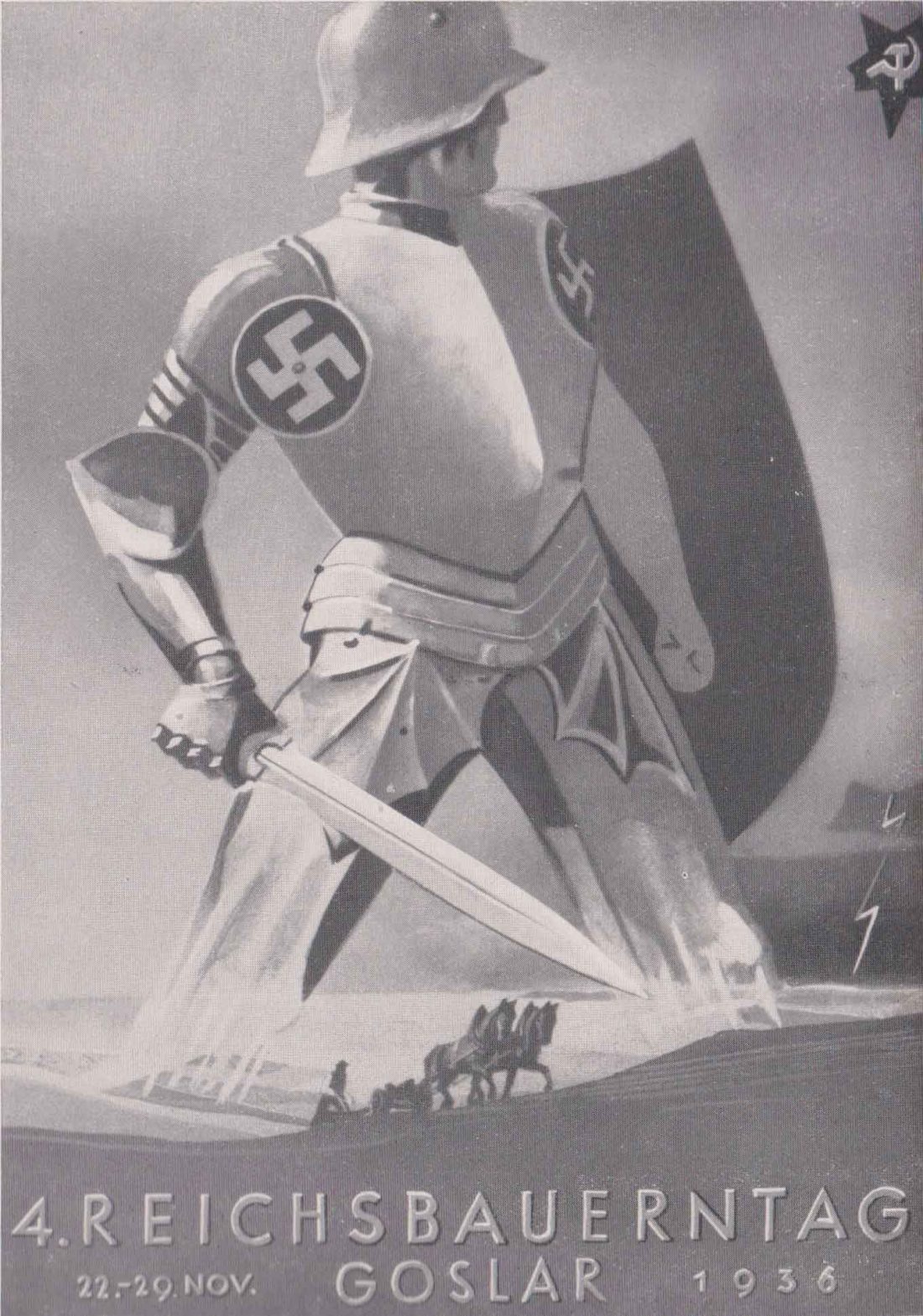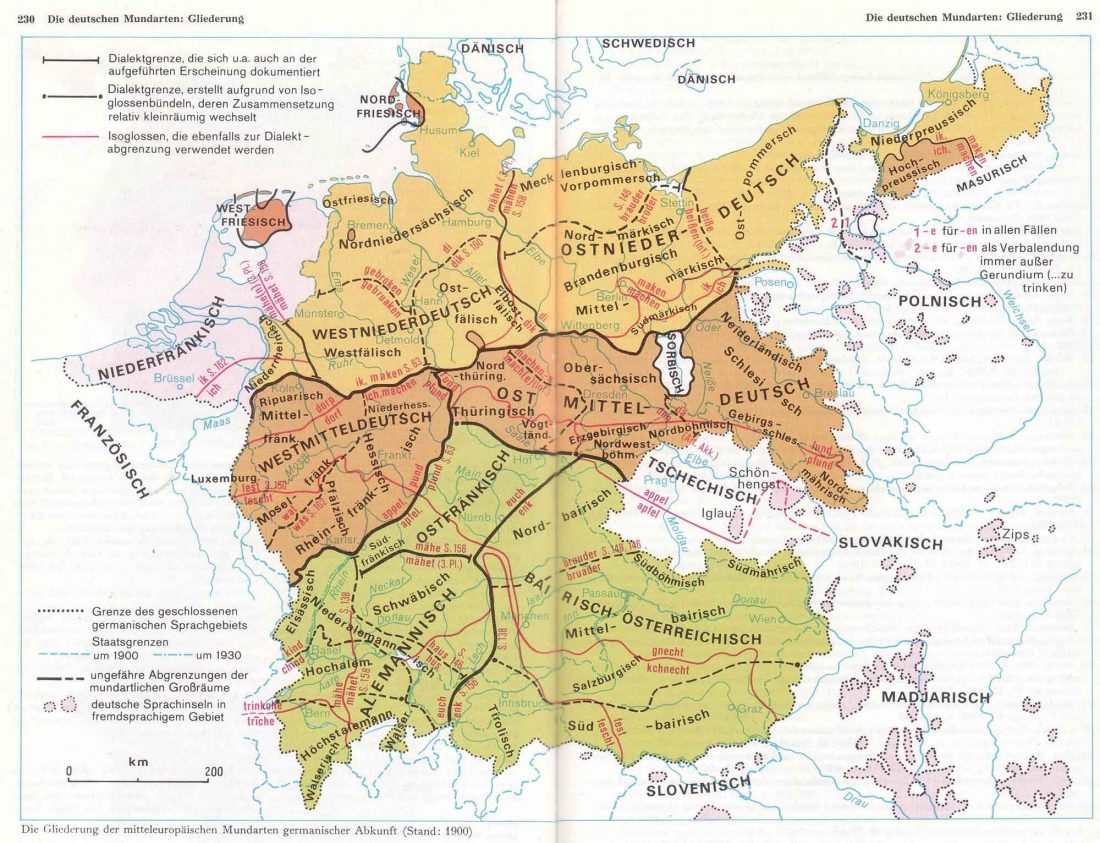It was reported long ago that genetic studies were being made on remains of a surprisingly big battle that happened in the Tollense valley in north-eastern Germany, at the confluence between Nordic, Tumulus/Urnfield, and Proto-Lusatian/Lusatian territories, ca. 1200 BC.
At least 130 bodies and 5 horses have been identified from the bones found. Taking into account that this is a small percentage of the potential battlefield, around 750 bodies are expected to be buried in the riverbank, so an estimated 4,000-strong army fought there, accounting for one in five participants killed and left on the battlefield.
Body armour, … Read the rest “The Tollense Valley battlefield: the North European ‘Trojan war’ that hints to western Balto-Slavic origins”
